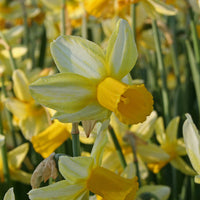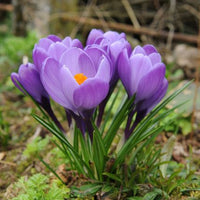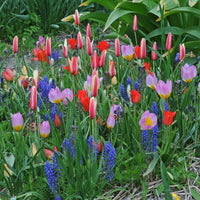General instructions for planting bulbs
The bulbs you receive are top-size and do not require extra nutrition at planting time. In fact, if your bulbs are planted in good garden soil which support other plants, almost no fertilizer is necessary in subsequent years either.
In poor soils a dressing of some sort can be beneficial. The best time to do so is after the sprouts have broken through in early spring. A light dressing of any good organic fertilizer or well-rotted manure will be suitable. Remember, this feeding is not so much for the benefit of the flowers soon to open as for the new bulbs developing below. More specific instructions are given for the individual bulbs where appropriate.
Always allow the foliage of your bulbs to die naturally, for it is at this time that the bulb produces the food which will carry it over to the next season.













 Deutsch
Deutsch English
English





















